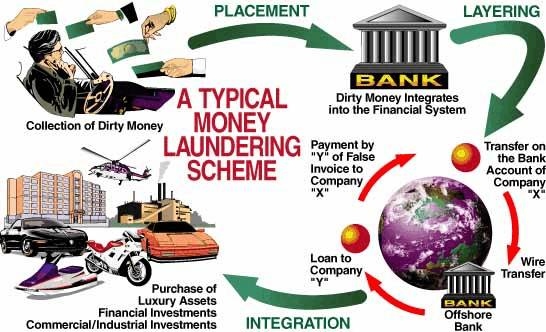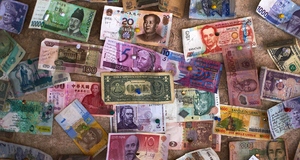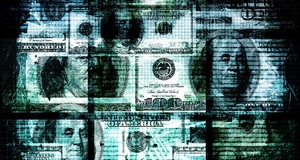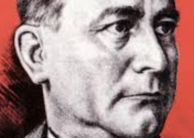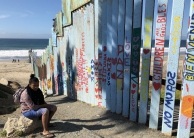Using Anti-Money Laundering Measures in the Financial World to Combat Organized Crime
By
2015, Vol. 7 No. 10 | pg. 1/2 | »
IN THIS ARTICLE
KEYWORDS
AbstractThis research paper thoroughly explains the concept of money laundering and examines the costs that are endured by the governments, financial institutions, but most importantly individuals who are most vulnerable to the influence of organized criminal groups engaging in money laundering. It also provides an analysis of the measures undertaken to prevent and detect money-laundering that are a highly effective means of identifying criminals and terrorists and the underlying activity from which money is derived. It discusses the application of intelligence and investigative techniques that constitute a way of detecting and disrupting the activities of terrorists and terrorist organizations. Most importantly, however, the paper argues that targeting the money laundering aspect of criminal activity and depriving the criminals of their ill-gotten proceeds means hitting them where they are vulnerable. Without a usable profit, criminal activities such as prostitution, human trafficking, sex trafficking or abuse will not continue, thus strengthening emerging governments, economies, and societies in general. The Concept of Money LaunderingThe foremost reason why individuals and groups engage in an illegitimate activity is to make money. Nowadays, due to significant developments in financial information systems and on-line communication, money may be instantaneously transferred anywhere in the world with speed, anonymity, and ease. This makes the task of preventing, detecting, and prosecuting money laundering more critical than ever. According to the United Nations Office on Drugs and Crime (UNODC) Introduction to Money-Laundering, “Money laundering is the method by which criminals disguise the illegal origins of their wealth and protect their asset bases, so as to avoid the suspicion of law enforcement agencies and prevent leaving a trail of incriminating evidence.” As noted by the former Special Adviser to the U.S. Secretary of the Treasury, William F. Wechsler (2001), for decades money laundering and tax avoidance have relatively frequently been perceived by the international community as intricate issues “hinging on the minutiae of tax codes and regulatory laws” and yet that perception masks “a destructive, often bloody reality.”Proceeds derived from financial fraud, illegal arms sales, illegal drugs trade, subornment, or human sex trafficking sustain the existence and expand the power of organized crime and terrorist groups on the transnational, national, and local scales. The likely social, economic and political consequences of money laundering, if left unconstrained or tackled inefficiently, are grave and include the derailment of financial institutions, the collapse of emerging economies, and enhanced volatility of the financial markets, all of which can cause and have caused widespread social and political destabilization (FATF, F.A.Q.). This chaos in turn fuels the formation of a thriving criminal underworld, where the respect for individual human rights and the rule of law is virtually non-existent. As noted by Lousie Frechette (UN, 2000), Deputy Secretary General United Nations, [V]iolence, corruption and money laundering are the inevitable accessories to large-scale, organized criminal activities. They threaten the fundamental rights of individuals, the interests of legitimate market operators, and the development and stability of entire countries. In his 1998 Paris address to the Financial Action Task Force (FATF) community, the then IMF Managing Director, Michel Camdessus, stated that money laundering was one of the gravest issues facing the global financial community (IMF, 1998). Launderers ceaselessly look for new routes to hide and legalize their funds. National economies with expanding or developing financial hubs, but with insufficient controls, are predominantly vulnerable, whereas financially established economies implement comprehensive anti-money laundering systems. In today’s financial marketplace, criminal organizations are capable of penetrating government agencies and financial establishments by engaging in bribery and corruption in public and private sectors (e.g.: the 2000 Bank of New York case, (BBC, 2000)) or even sponsoring political incumbents with their illicit funds, potentially obtaining direct control over multiple sectors of the economy and government. The economic and political influence of criminal organizations can undermine ethical and legal standards and ultimately weaken democratic political institutions. Essentially, the money laundering apparatus sustains, and thus facilitates, the expansion of criminal activity worldwide (FATF, F.A.Q). Therefore, anti-money laundering investigation seems to be the only available and successful measure in the detection, interception, and restoration of criminal funds derived from unofficial and illegal sources. Money laundering has three distinguishable phases – placement, layering and integration. The initial stage of money laundering comprises the placement of illegally obtained funds or assets into the financial system. Layering constitutes the second stage of money laundering and involves the conversion and movement of the illicitly derived funds to other legal institutions. This process aims at distancing the placed funds from their criminal source, such as by concealing or disguising their true source, ownership, and audit trail through complicated layers of financial transactions. The final stage in the process involves the integration of funds into the legitimate economy and financial system. Here the laundered money becomes available to criminals who use it for both legitimate and illegitimate investments, such as purchasing financial assets, real estate, and luxury goods (Levi & Reuter, 2006). By this stage, it is exceptionally difficult to differentiate between legal and illegal wealth. In discussing financial crimes such as money laundering, it is absolutely critical to comprehend the predicate offenses behind it. These include drug dealing, other illegal market crimes (e.g.: human trafficking inclusive of forced labor and sexual slavery, gambling, extortion) white-collar crimes (e.g.: embezzlement, fraud, tax evasion), bribery, corruption, and terrorism. This classification, as pointed out by Professor Michael Levi and Professor Peter Reuter (2006), enhances the homogeneity of the results “of interventions and the seriousness and distribution of the harm caused by particular offenses to society.” Whereas narcotics trafficking exclusively deals in cash transactions, white-collar crimes and terrorism constitute a mix of cash transactions and electronic fund transfers. The former’s scale of operations is often wide, and its severity of harm is high. On the other hand, terrorism’s scope is small, and white-collar crime combines both small and large dimension. Finally, the harmfulness of the two predicate offenses, i.e. terrorism and white-collar crime, runs along a continuum from very severe to low respectively (Levi & Reuter, 2006). Assessing the Scale of Money LaunderingWhen it comes to measuring the extent of money laundering, there is no universal method available that researchers believe delivers unequivocal and accurate figures. Contrary to other criminal deeds, from which individuals who suffer wrong inform law enforcement, money laundering is a relatively concealed activity, and only a limited number of offenses are reported. Likewise, the classification and description of money laundering’s predicate offences might vary depending on the jurisdictional authority, hence, it is challenging to compare cross-national activities considering that “like with like” comparisons might not be available (UNODC, 2011). The traditional methods applied to measure the scale of money laundering vary and range from field and case studies through surveys and interviews or suspicious or unusual transactions to statistical discrepancies. Nevertheless, all of the methods mentioned above have significant flaws that impact the accuracy of measuring the money laundering phenomenon. In the instance of field and case studies, according to Professor Brigitte Unger (2009), it is challenging to determine the representativeness of the data, and if the analysis of the cases is performed, it often does not take into account “the full range of money laundering practices, networks, and behavioral assumptions.” The surveys and interviews method poses yet another challenge as it includes miscellaneous prejudices – a lack of adequate sample representativeness or the bias of the respondents. The third method, suspicious or unusual transactions, offers an analysis of suspicious transaction reports or unusual transaction reports delivered to the financial intelligence unit (FIU) of a given country. However, it is hardly feasible to take into consideration all discrepancies between individual countries and their reporting requirements or thresholds. Additionally, the private sector might apply the so-called “strategic dilution of information” by not providing the full data to protect its business interests (Unger, 2009). Finally, statistical discrepancies inhibit the assessment of money laundering through the availability of various fluctuating statistical indicators, such as the ones presented by Unger as “errors and omissions in the balance of payments [hot money method], differences in capital inflows and outflows [residual approach], and differences in money supply and money demand [currency demand approach].” None of these approaches is immune from error either (Unger, 2009). Essentially, there is no one particular method that could be deemed the ‘gold standard’ for an effective assessment of the money laundering phenomenon. In the face of this limitation, the UNODC proposed a method that simultaneously incorporates criminal activities and the resulting financial flows. The discrete ways of measuring money laundering, according to UNODC (2011), are the following:
One of the most well-known assessments of the extent of money laundering was offered in 1998 by the International Monetary Fund, which introduced the estimate of the ‘consensus range’ of between 2-5 percent of global GDP. According to the UNODC estimates, earnings derived from all criminal activities could have risen to 3.6 percent of GDP (2.3 - 5.5 percent) or about US$2.1 trillion in 2009, of which money laundering equaled 2.7 percent of global GDP (2.1 – 4 percent) or US$1.6 trillion in 2009. Out of that last number, the movement of funds associated with international organized crime could constitute as much as 1.5 percent of global GDP, of which approximately three-fourths could have been utilized for laundering through the financial system. Transnational criminal income derived from trafficking in drugs constitute approximately 20 percent of all crime proceeds, circa 50 percent of transnational organized crime, and about 0.6% to 0.9% of global GDP (UNODC, 2011). Costs of Financial Crime to Government and SocietyThe prevalence of transnational organized criminal activities, and thus the sheer existence of money laundering, can significantly encumber governance, financial and social stability, and economic development on the local, national and international scales (UNODC, 2011). The implications of financial crime enumerated below constitute just the core consequences endured by society at large. Illegitimate Money Flows Leading to the Spread of Transnational Organized Criminal ActivitiesThe risks and vulnerabilities for governments, financial institutions and society stemming from illegitimate money flows are predominantly rooted in elementary criminal activities that finance those flows. Trafficking in drugs, in persons, or in counterfeit medicines have significant influence on the public and private sectors. For example, according to a 1999 study conducted in the Netherlands, 89 percent of all the funds amassed by drug dealers are then utilized for conventional investment, licit and illicit business activities, and fund collection for illegal reinvestment. Drug consumption-related activities stimulate acquisitive crime, particularly domestic burglary, fraudulent activities, or theft, and they comprise the majority of drug-connected economic costs. Further, trafficking activities mentioned above generate the growth of transnational or national criminal organizations that threaten the established social order. Additionally, some research indicates that there is an interrelationship between drug trading, governmental corruption, and a feeble rule of law (UNODC, 2011). With respect to human trafficking, the UNODC stated that it has a detrimental effect on social structures due to enhanced corruption and ubiquitous violence and extortion. In fact, there could be, according to UNODC (2011), “a 10:1 ratio in terms of the importance of drug trafficking (more than US$320 bn) versus trafficking in human beings (some US$32 bn).” Finally, as estimated by the World Health Organization, the smuggling of counterfeit medicines could equal to US$75 bn in 2010 which, in economic terms, surpasses twice the proceeds derived from human trafficking and constitutes a quarter of worldwide illegitimate drug sales. Dealing in counterfeit medicines inhibits the conducting of scientific research, since the profitability of substantial investment by pharmaceutical companies decreases, and therefore such firms are less inclined to invest, thus hindering medical innovations. Moreover, inferior drugs on the market threaten the well-being of patients, especially in the developing markets, and might contribute to the emergence of antibiotics-resistant bacteria endangering millions of lives (UNODC, 2011). Investment of Illicit Money Flows in the Legal SectorConsidering the fact that funds derived from diverse criminal activities could amount to US$2 trillion, the bearing of illicit financial flows on the economy is considerable, especially when said funds are then moved into legitimate economic sectors. The following are examples of direct socio-economic consequences of the negative impact of criminal financial flows (UNODC, 2011):
Suggested Reading from Inquiries Journal
Inquiries Journal provides undergraduate and graduate students around the world a platform for the wide dissemination of academic work over a range of core disciplines. Representing the work of students from hundreds of institutions around the globe, Inquiries Journal's large database of academic articles is completely free. Learn more | Blog | Submit Latest in Law & Justice |

